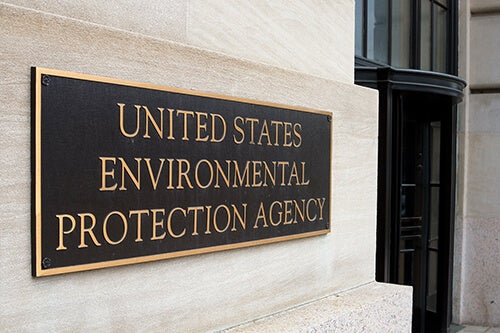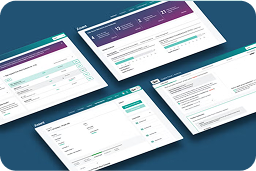This article is part three in Assent’s series on mineral supply chains and supply chain sustainability management, based on my trip to the Democratic Republic of the Congo (DRC). In a previous article, I discussed the importance of responsible mineral sourcing, namely how responsible sourcing goes deeper than conflict minerals compliance to cover minerals like cobalt and mica, as well as a broader range of geographic areas. In this part, we’ll explore how responsible sourcing can lay the foundation for a program that improves overall product and trade compliance, as well as environmental, social, and governance (ESG) management — and why having a program like this is becoming increasingly urgent as sustainability regulations emerge around the globe.
Maturing Your ESG Program Using Responsible Mineral Sourcing
The mineral sourcing data you collect for your compliance management can be used to mature your existing ESG, trade compliance, and product compliance programs, since all are connected through supply chain sustainability management.
Because most organizations aren’t confident about what topics are most material to their ESG needs, they don’t have thea good pool of data they need to start making decisions with. But this is where responsible minerals sourcing data comes into play.
Many businesses, particularly durable goods manufacturers, have mineral extraction at some point in their supply chain — and many of those have a conflict minerals compliance program or extended minerals compliance program in place to meet their legal requirements. By looking deeper into their responsible mineral sourcing data, manufacturers actually have much more data than they realize. The building blocks for your supply chain sustainability and compliance program may already be in place — you just need to know how to use them.
What makes your responsible sourcing program a great place to start collecting data to fuel other compliance or ESG initiatives? Here are a few reasons:
- For one, businesses have an easier time understanding how to start a responsible sourcing program, because the processes for tracking and reporting are already well established through Section 1502 of the Dodd-Frank Wall Street Reform and Consumer Protection Act. There are already free tools, including the Conflict Minerals Reporting Template (CMRT), Extended Minerals Reporting Template (EMRT), and Pilot Reporting Template (PRT) that make it simple for organizations to get a basic program up and running.
- In addition, there is high engagement from executives, sustainability professionals, and the buying public. Stakeholders are well aware of the brand damage risks associated with human rights abuses in the mining sector. The public is also well educated about the sustainability impacts of mineral extraction, so the business case and benefits are clear and established.
- Lastly, responsible mineral sourcing data gives a good first look into where your product compliance and ESG risks live in your supply chain. Because mineral sourcing data touches product compliance, human rights, and ESG, it gives a useful snapshot of your immediate risks and where to focus your risk reduction efforts. For example, using the EMRT will help you understand if your cobalt is sourced from a sanctioned entity, or if forced labor is involved.
These factors make responsible mineral sourcing programs an easy place to start thinking holistically about supply chain sustainability: The tools are already available, stakeholders see the business value, and you get environmental, human rights, and product compliance data in one survey. Having responsible sourcing data on hand solves one of the biggest problems organizations have with sustainability management: They don’t know where to start.
Dig Deeper & Go Beyond Basic Reporting
Responsible sourcing data, like the information collected in an EMRT, is rich with valuable compliance and sustainability insights, but you need to know how to understand the story it can tell. To capture more value from your mineral sourcing data, don’t just think of it as simply feeding directly into a single regulatory report; instead, it is a business resource with multiple applications. The context and substance of the data matter. You can also partner with someone who can pull deeper insights from the data and help you understand the larger context behind your data.
Using the EMRT will highlight some early indicators of where sustainability risks such as child labor hide in your supply chain. This business intelligence can inform where you start or focus your supply chain sustainability strategy — evidence of a certain type of risk means you will want to dig deeper into those areas with further supplier surveys and audits. For example, if your responsible sourcing data shows a risk of forced labor in your mineral supply chain, it’s a good signal that your overall ESG program needs to ask suppliers about their labor practices and review if they have a code of conduct.
You can also use responsible mineral sourcing data and the EMRT or the PRT model to guide your sustainability program growth for other areas of your supply chain. For example, manufacturers can apply processes from their mineral sourcing data collection to other key components of their product. A good ESG solution should provide questionnaires and support tailored to your specific sustainability goals, such as having surveys to measure supplier impact.
Regulations on the Rise: ESG & Compliance Combined
Worldwide regulations that combine elements of ESG and compliance are on the rise. The U.S. Uyghur Forced Labor Prevention Act (UFLPA) is a prime example. This trade compliance regulation bars U.S. market access based on human rights concerns. The UFLPA requires importers to have solid human rights due diligence data, and for that, they need a system for collecting and validating supplier ESG performance. In some cases, this can be a survey like the Slavery and Trafficking Risk Template (STRT), or a more comprehensive supply chain sustainability platform. Either way, it’s clear that due diligence for regulatory compliance is merging with topics that once traditionally fell under the ESG umbrella. And the UFLPA is just one of many global examples.
This blending of compliance and sustainability makes it increasingly urgent for businesses to begin implementing ESG due diligence practices to protect their market access and compliance. By using responsible mineral sourcing as the first step in the journey, businesses can more quickly and effectively get their program up and running.
Check out our guide, ESG, Product Compliance & Sustainability: How They’re All Connected, to learn how your supply chain gives you the data you need for deeper sustainability.
Get More Out of Your Responsible Minerals Data
Your minerals supply chain provides a continuous stream of business intelligence, but it’s only useful if you have a methodology for extracting insights and connecting them back to your ESG and compliance goals. The depth of information you can get from a responsible minerals program is a double-edged sword: The insights it delivers are impactful, but managing all of this data is difficult and can become overwhelming when you stack it on top of other ESG goals. If you’re only using the EMRT, CMRT, PRT, or spreadsheets to collect and store all of this complex data, chances are that something will slip through the cracks.
Manufacturers are best served with a complete supply chain sustainability management solution that supports data analytics for responsible mineral sourcing and ESG alongside your compliance reporting. These data streams all feed into each other and should be centralized under one platform to achieve deeper insights.
Learn how you can build a mineral sourcing program that keeps up with today’s rapidly expanding ESG demands by downloading Assent’s guide, Dig Deeper: Building a Conflict Minerals Program for Today’s Risk Landscape. You’ll get even more expert insights into how to use your mineral sourcing data to quickly identify new sustainability risks.









